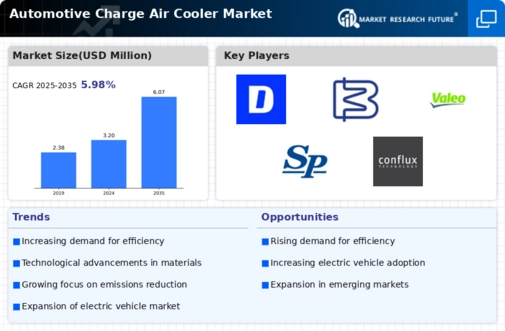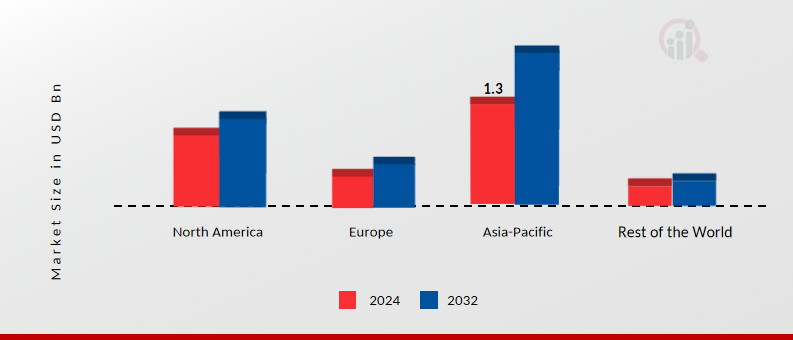Market Share
Automotive Charge Air Cooler Market Share Analysis
The Automotive Charge Air Cooler (CAC) Market is undergoing significant trends reflective of the automotive industry's push towards improved performance, fuel efficiency, and emissions reduction. One prominent trend in this market is the increasing demand for lightweight and compact charge air coolers. As automakers strive to enhance the overall efficiency of vehicles, reducing weight and optimizing space become critical factors. Lightweight CACs contribute to improved fuel economy and better performance, aligning with the industry's focus on creating more sustainable and efficient automobiles.
Moreover, the market is witnessing a surge in the adoption of electric and hybrid vehicles, influencing trends in the automotive charge air cooler sector. While traditional internal combustion engines still dominate the market, the rise of electric and hybrid technologies has led to the development of advanced cooling solutions for batteries and power electronics. Automotive CACs are playing a vital role in maintaining optimal operating temperatures for electric powertrains, contributing to the efficiency and longevity of these alternative propulsion systems.
Another significant trend is the integration of advanced materials and manufacturing processes in charge air cooler design. The use of materials like aluminum and advanced alloys enhances the heat transfer efficiency of CACs, allowing for more effective cooling. Additionally, innovative manufacturing techniques, such as additive manufacturing (3D printing), enable the production of complex and optimized CAC designs, further improving performance while reducing production costs. These advancements in materials and manufacturing contribute to the overall evolution of automotive charge air cooler technology.
Furthermore, the market is responding to increasingly stringent emission standards worldwide, influencing trends in charge air cooler technology. With a focus on reducing greenhouse gas emissions and improving air quality, automakers are incorporating technologies to enhance combustion efficiency. Charge air coolers play a crucial role in this aspect by cooling the compressed air before it enters the combustion chamber, improving the overall efficiency of the engine and reducing emissions. As emission regulations continue to tighten, the demand for efficient charge air coolers is expected to grow.
Additionally, the advent of autonomous and connected vehicles is impacting trends in the automotive charge air cooler market. These advanced vehicles generate substantial heat due to the numerous electronic components and sensors they incorporate. As a result, there is an increased demand for efficient cooling solutions to ensure the reliable performance of these sophisticated systems. Charge air coolers contribute to maintaining optimal temperatures for various vehicle components, supporting the seamless operation of autonomous and connected functionalities.
In conclusion, the Automotive Charge Air Cooler Market is witnessing transformative trends driven by the industry's pursuit of enhanced performance, sustainability, and compliance with stringent regulations. The demand for lightweight designs, integration with alternative propulsion systems, advancements in materials and manufacturing, and the role in emission reduction are shaping the evolution of charge air cooler technology. As the automotive landscape continues to evolve, charge air coolers are positioned as critical components in achieving the industry's goals of efficiency, reduced emissions, and the adoption of new propulsion technologies.









Leave a Comment